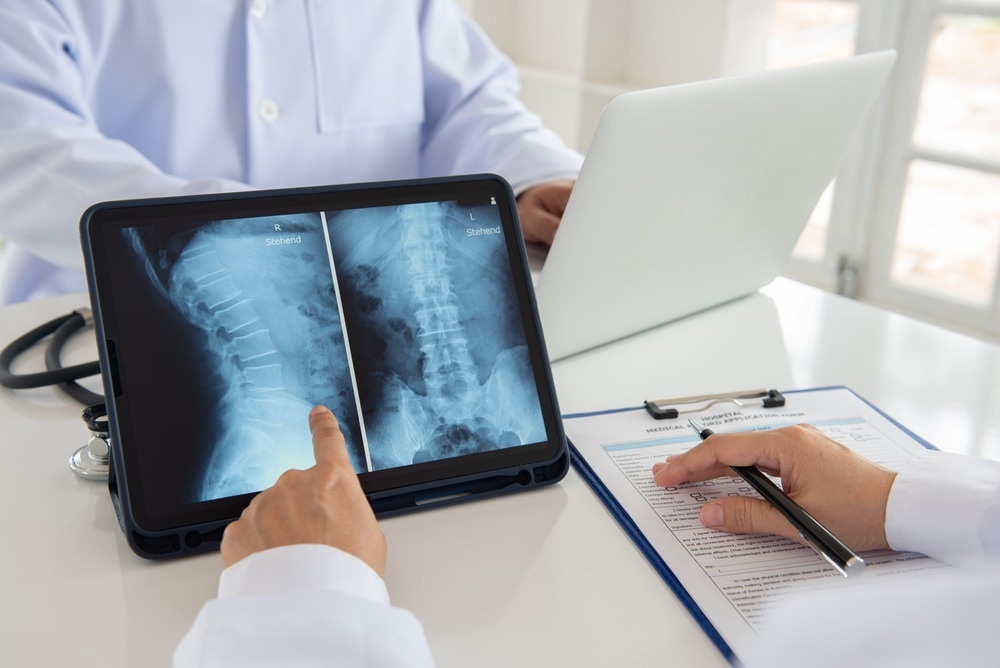A team of researchers recently published a study in Scientific Reports presenting an open-source software named SpineS for the automated longitudinal structural evaluation of dendritic spines. SpineS notably includes capabilities for human intervention to ensure the best results.

Study: An interactive time series image analysis software for dendritic spines. Image Credit: create jobs 51/Shutterstock.com
Large time-series datasets should be gathered and analyzed to conduct experiments that attempt to capture the dynamics behind dendritic spine structural transformation. To demonstrate the algorithm's effectiveness in various potential experimental settings, the researchers tested it on in-vitro, in-vivo, and virtual datasets.
Dendritic Spines Structure Tracking for Understanding Memory Development
The effectiveness of excitatory synapses varies with maturation, exercise, and training. Efficacy of synapses is associated with dendritic spine transformation. The subsequent information transfer between inputs through the dendritic arbor could be affected by changes in effectiveness and structure.
Dendritic spines can dynamically change structures during growth and development. A dendritic spine's structure is related to its functional effectiveness.
Studies on learning and memory have shown that the synapses hold a large portion of the data that a neuron stores. High-accuracy synaptic structure tracking can provide clues about the dynamic nature of memory and aid in understanding how memories develop in natural and artificial neural networks.
Fluorescence Imaging for Dendritic Spine Structure Tracking
Clarifying the methods by which data is stored in the brain requires understanding how such alterations are physically sustained in the neuron.
Activity-dependent structural changes at spines are experimentally analyzed by multi-time point selection of z-stack fluorescence images, often acquired over several hours.
Fluorescence imaging helps examine the structural development processes along a dendritic branch. Depending on the image acquisition settings and the kind of neuron being scanned, hundreds of spines can be evaluated by fluorescence imaging.
Limitations of Fluorescence Imaging
The number of spines in the longitudinal study can be thousands, making it laborious and time-consuming to manually evaluate such a dataset.
Fluorescence imaging is sensitive to fluctuations caused by the imaging system, making dendritic spine structure tracking challenging. A little fluctuation in measurements can make the whole evaluation inoperable.
Development of Image analysis Software (SpineS) for Investigation of Structural Changes in Dendritic Spines
Biologists use Matlab to analyze images. Matlab toolboxes include curve fitting, image processing, signal processing, deep learning, and statistics.
Most open-source software packages for dendritic spine analysis are no longer available/maintained or not appropriate for longitudinal datasets.
SpineJ30 is a practical choice for super-resolution microscopy image stacks, however, it cannot work for fluorescence imaging analyses of dendritic spine morphology.
To overcome this limitation, Argunşah et al. described the front and back-end (algorithms) inner workings of SpineS. They analyzed its performance on multiple datasets from different laboratories using different imaging methods.
SpineS is an open-source Matlab-based software that automatically registers dendritic arbor images collected at consecutive time points to correct spatial displacements.
SpineS automatically detects the segments of dendritic spines and calculates spine head volumes using integrated fluorescence intensity (IFI) and confocal laser scanning microscopy.
SpineS evaluates and corrects spine identification errors, dendrite and spine head segmentation, spine neck routes, and full-width at half-maximum (FWHM) based spine head volumes.
Summary of Research Findings
Argunşah et al. introduced SpineS, an automated image analysis method for quantifying dendritic spine properties. The suggested tool produced excellent results in identification and segmentation accuracy, as well as run durations for dendritic spine analysis.
When the spine retains a standard spherical form across all the durations, the results show that FWHM and IFI can be used simultaneously for specific volume trend evaluation. They can also be utilized interchangeably when aggregated data is needed. With SpineS's post-quality evaluation tool, operators can reject or change specific spine segmentation methods and neck motions at any moment.
Due to the variable fluorescence intensity distribution between the spine head and neck, segmentation quality depends on this characteristic, which serves as a key point of quality control for the program.
Overall, the SpineS toolkit accelerates image analysis, cutting down the time it takes from days to hours while maintaining the accuracy of the analysis. SpineS offers a more objective structure quantification than manual techniques, another significant benefit of the software.
To establish the center of the spine in each image when performing manual FWHM measurements, the user must align the spine head and draw a line across it. This can induce experimental bias.
More than 25K hand annotation detectors were used to train the unique multi-class dendritic feature classification, which increased the analytical speed and accuracy compared with prior research. The accuracy of the analysis can be increased by either employing a better feature detector or integrating many feature detectors.
Reference
Argunşah, A. Ö., Erdil, E., Ghani, M. U., Ramiro-Cortés, Y., Hobbiss, A. F., Karayannis, T., Çetin, M., Israely, I., & Ünay, D. (2022). An interactive time series image analysis software for dendritic spines. Scientific Reports, 12(1), 12405. https://www.nature.com/articles/s41598-022-16137-y
Disclaimer: The views expressed here are those of the author expressed in their private capacity and do not necessarily represent the views of AZoM.com Limited T/A AZoNetwork the owner and operator of this website. This disclaimer forms part of the Terms and conditions of use of this website.